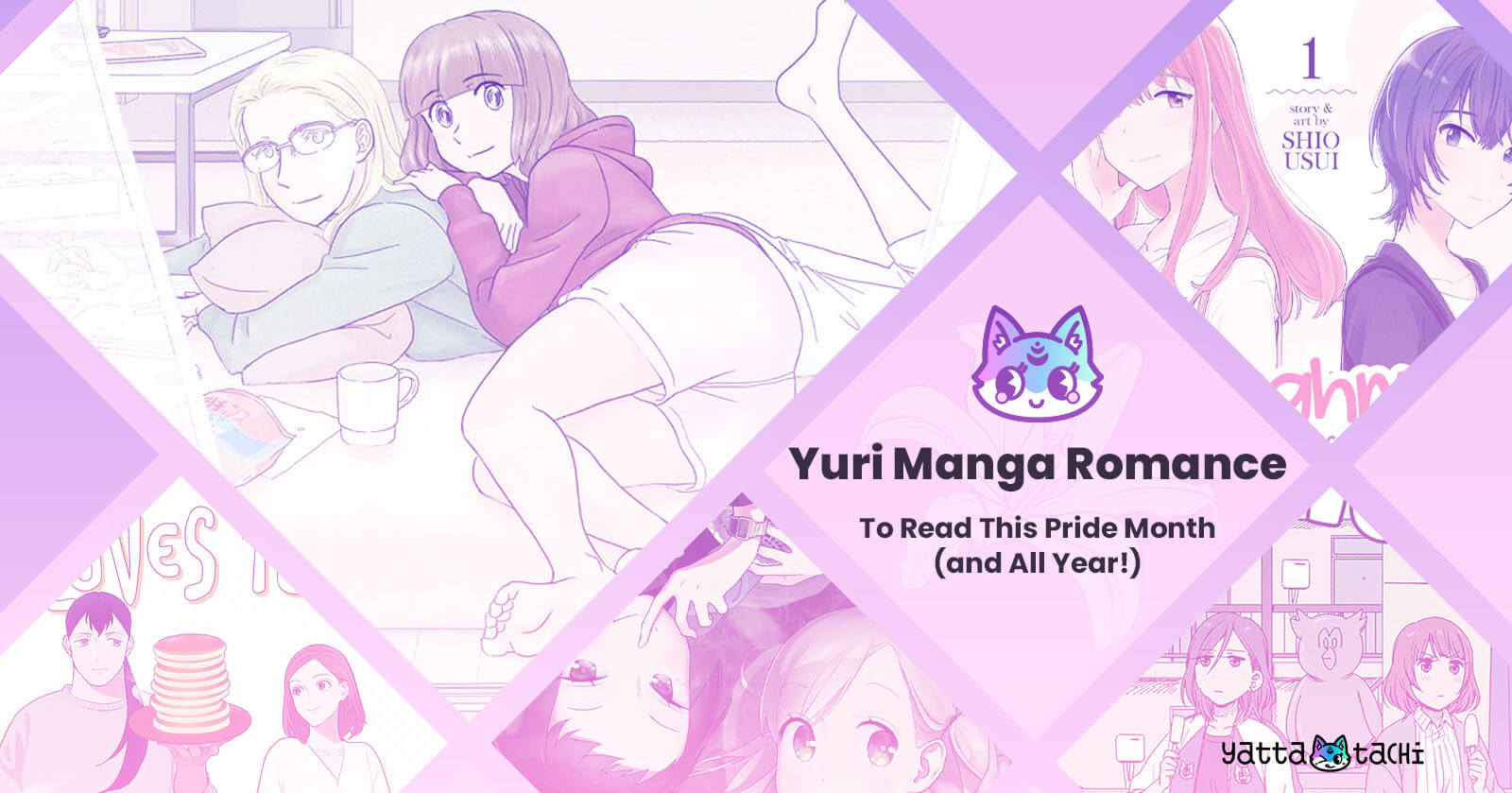It’s a good time to be a yuri fan. As resources like Okazu and YuriMother diligently catalogue, more yuri manga is coming out and getting licensed in English than ever before. The question is, with this buffet of sapphic love stories in front of you, where do you start?
Yuri, a brief introduction
“Yuri” is an umbrella term for media (anime, manga, light novels etc.) that centers on relationships between women. Yuri manga has its historical roots in girls’ school stories, emotionally intense but ultimately chaste tales of “romantic friendships” between young women. Referred to by the literary category Class S, these works drew on expectations of girlhood in the shifting landscape of Japanese literature and culture through the early 20th century.
The tropes they established have hung on for many years. Works of contemporary yuri remain in conversation with them. For example, Rock is a Lady’s Modesty and Young Ladies Don’t Play Fighting Games are both set in over-the-top old-fashioned girls’ schools governed by constrictive rules around being “ladylike”. Yuri Is My Job! also riffs on these conventions by theming a cafe around them, with the main characters putting on a theatrical performance of pure girlhood and intimate “sisterly” bonds for paying customers.
This, too, is yuri
Many yuri series also reject the notion that relationships between women are only possible in the school setting. Bloom Into You and Kase-san and… follow their central couples out of high school and into adult life, engaging frankly with the characters’ sexuality. Likewise, Run Away With Me, Girl interrogates this “just a phase” notion in an adult drama about two former girlfriends reuniting. While the classics remain important—and while series that focus on “romantic friendships” that never quite become canon queer romances are still valid in their own way—it’s exciting to see how the space has evolved, and continues to evolve, in recent years.
One such development is the rise of genre yuri. If you’re looking for horror yuri, you might have a good, spooky time with Otherside Picnic or This Monster Wants to Eat Me. If you want to scratch your fantasy itch, you have The Magical Revolution of the Reincarnated Princess and the Genius Young Lady or The Executioner’s Way of Life at your fingertips. And if you’re in the mood for something more straightforwardly lovey-dovey, the contemporary romance remains a staple. In fact, there’s a variety of series even within that specific subgenre.
It’s those contemporary romances that I’m going to focus on in these recommendations. I’ll specifically be showcasing my favorite series with adult protagonists, taking us outside the walled gardens of Class S to the world of queer adulthood. Some are slice-of-life comedies, others are much more dramatic. Each is a queer story in its own way, though they all handle their themes differently. From nightclubs to home kitchens, come on a tour of contemporary adult romance yuri with me and celebrate what the space has to offer right now.
After Hours by Yuhta Nishio
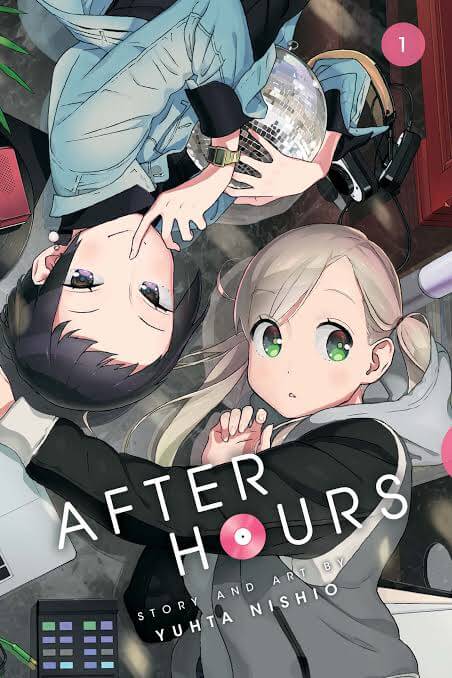
Translated by Abby Lehrke
Touch-Up Art & Lettering by Sabrina Heep
Design by Shawn Carrico
Editor: Pancha Diaz
Publisher: VIZ Media
24-year-old Emi is feeling adrift, until a chance encounter with a DJ named Kei sends her headfirst into Tokyo’s music and clubbing scene. As Emi finds an unexpected new passion, her casual relationship with Kei blooms into something more. But will it all stick? Or will it come crashing down around her head as usual?
I have a lot of nostalgia for this series—a neat little trilogy, complete at three volumes—since it was one of the first yuri manga I read when first exploring the genre in earnest. Its adult protagonists, matter-of-fact depictions of sexuality, and nightclub setting set it apart from the aforementioned schoolyard stakes and “pure” intimacies of Class S.
Aside from an adventure through the world of DJing, this is a tender tale of an early-twenties identity crisis. It follows Emi through various personal disasters with a mix of drama and comedy. She’s a messy and flawed protagonist, and it’s rewarding watching her get a grip on her life and decide who she is as a person. Emi and Kei also hook up in the opening chapters, so their romance is driven less by “will they or won’t they?” than whether their relationship is sustainable for both parties. It’s a distinct romantic arc when compared to some of the more slow-burn titles on this list.
You can purchase After Hours Volume 1 on Bookshop, Amazon, and Barnes & Noble.
Catch These Hands! by murata
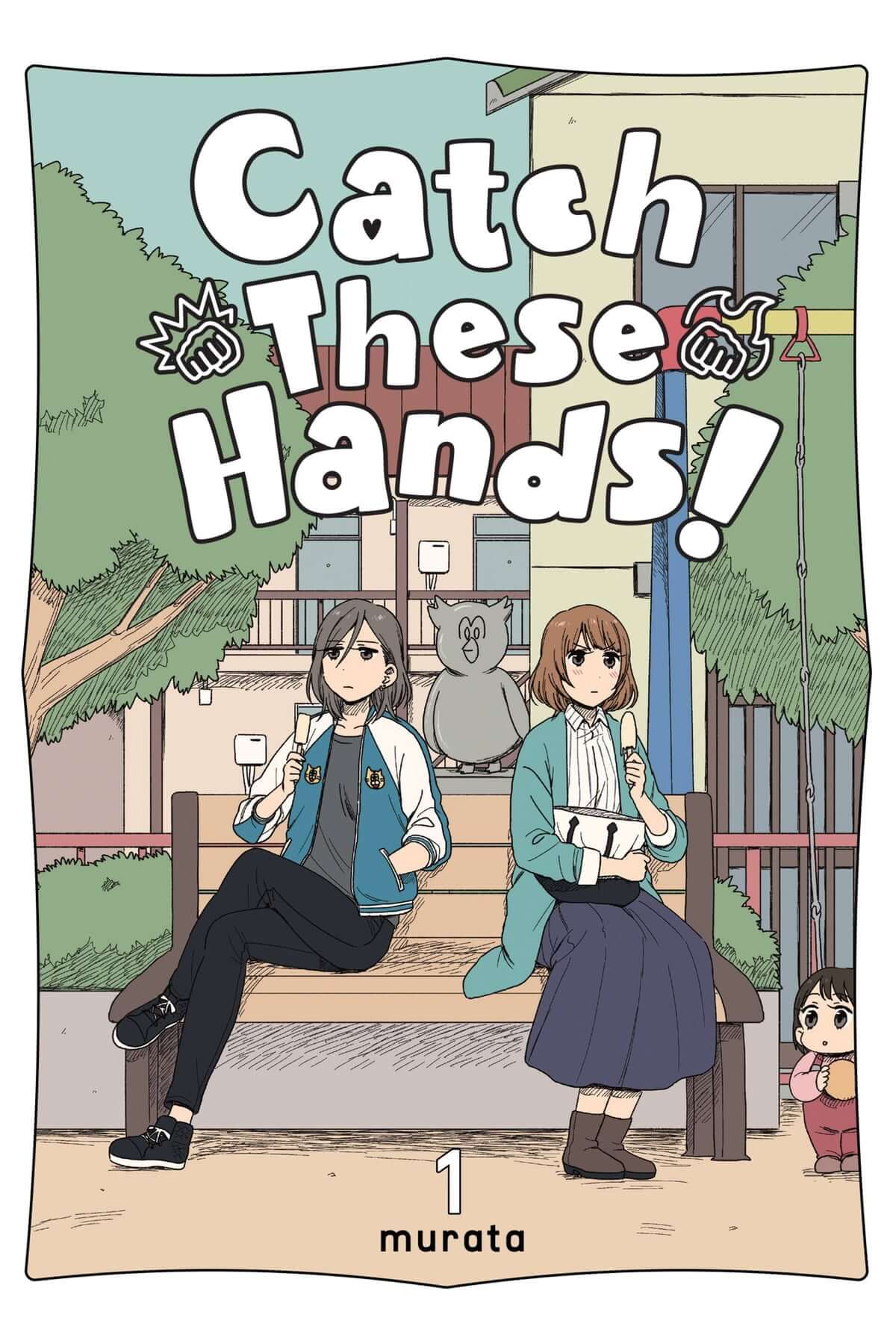
Translated by Amanda Hayley
Letterer by Bianca Pistillo
Publisher: Yen Press
Former high school delinquent Takabe is determined to leave her rough-and-tough past behind to become a proper adult with a husband and kids. Her plans change when she runs into her former rival, Soramori, who challenges Takabe to a good ol’ fist fight. If Soramori wins the duel, Takabe has to go on a date with her!
Catch These Hands grounds its goofy premise in a sincere depiction of a quarter life crisis. All the members of Takabe’s old girl gang are getting married and/or getting pregnant, and she feels like she’s the one left behind. Even if the narrative doesn’t make a big point out of Takabe’s queer sexuality (she falls for Soramori, of course; but she also reads as being somewhere in the gray of the aromantic and/or asexual spectrum), the story reflects queer themes and a familiar queer dilemma. While Takabe is distressed that she hasn’t managed to follow the typical pathway of Proper Adulthood, she finds freedom by letting all that go.
The dynamic between Takabe and Soramori is surprisingly cute for a relationship that starts with them throwing punches. Most importantly, Soramori is so delightfully awkward that her “you have to date me!” mandate feels silly and sweet rather than coercive. Complete at a comfy four volumes, much of the story is about the pair bonding over their “failure” to be normal grown-ups, and instead finding their own rhythm. It’s rewarding watching these goofballs fumble through the motions of what they think they’re supposed to do before, inevitably and adorably, realizing that they’ve already met someone who loves them just the way they are.
You can purchase Catch These Hands! Volume 1 on Bookshop, Amazon, and Barnes & Noble.
Doughnuts Under A Crescent Moon by Shio Usui
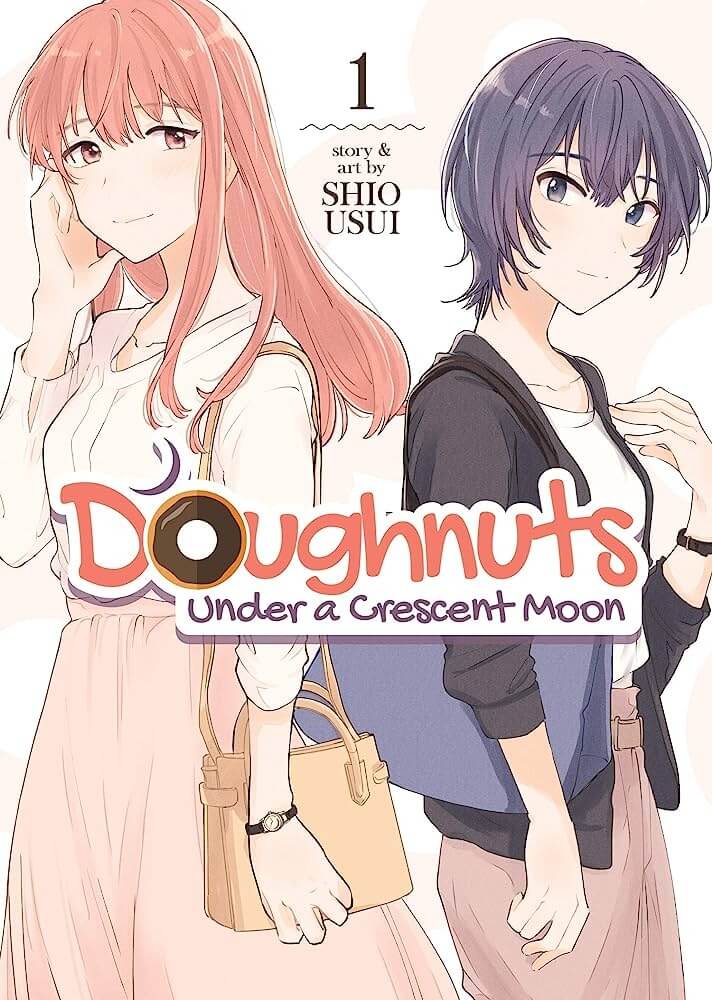
Translation by Jenny McKeon
Adaptation by Cae Hawksmoor
Lettering and Retouch by Rina Mapa
Publisher: Seven Seas Entertainment
Shy office worker Hinako is convinced that if she can just be “normal”—appropriately feminine, sociable, and attracted to men—she’ll fall in love and finally achieve the happiness her mother and friends have always wanted for her. But a chance encounter with her seemingly aloof coworker Asahi sets her on a different path.
The office romance is a staple of the adult rom-com, and Doughnuts is a personal favorite of mine for its soft, sweet love story. Like Catch These Hands! this series also deals with the notion of “normal” adulthood, and how success is often measured in the traditional heteronormative family structure. Hinako must deal with direct homophobia from her parents as well as what society expects women must do in order to be happy. It’s heartbreaking to watch her try to perform a role that makes her miserable.
But there’s a happy ending in sight. Asahi—and her younger sister, whom she is the primary carer for—shows Hinako an alternate framework for family, as well as what happiness and personal fulfillment can be. What if there’s not something “missing” from Hinako, and she can be happy the way she is? It’s satisfying watching Hinako’s growth, and her slow burn (but not too slow) romance with Asahi, unfold over four volumes.
You can purchase Doughnuts Under A Crescent Moon Volume 1 on Bookshop, Amazon, and Barnes & Noble.
She Loves to Cook, She Loves to Eat by Sakaomi Yuzaki
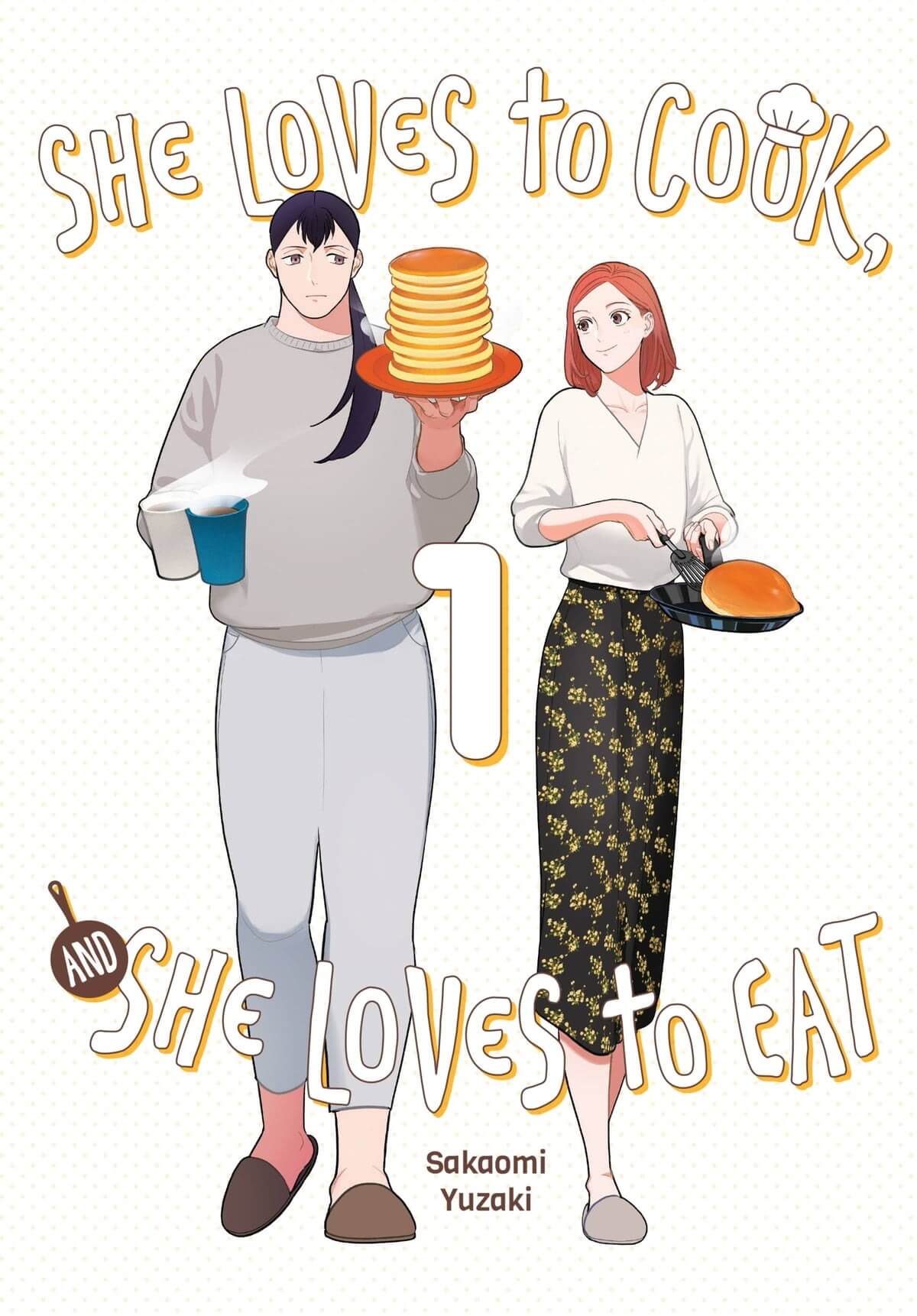
Translated by Caleb Cook
Letterer by Phil Christie
Edited by Emily Gikas & Carl Li
Designed by Liz Parlett
Publisher: Yen Press
Nomoto enjoys cooking, but her lavish meals feel wasted when she lives alone and only has herself to feed. At least, until she bonds with her neighbor Kasuga. But is there more than a friendship and shared appreciation for the culinary arts simmering away?
Ah, the casual yet profound intimacy of sharing a meal. Food-focused anime and manga may be nothing new. But She Loves to Cook is a stellar example, from the meticulous depictions of the cooking process and the meals themselves, to the undeniably cozy vibes coming off the pages. Aside from being a relaxing read that will make your stomach grumble, though, this series is also a grounded exploration of pressing contemporary issues. The relationship between gender roles and food, for example; whether that’s the idea that girls should eat less than boys, or that Nomoto’s culinary skills are only worthwhile if she ends up as someone’s housewife. There are candid depictions of strained or outright abusive family situations, as well as disordered eating, among the characters’ backstories.
She Loves to Cook engages with LGBTQIA+ rights, homophobia, and coming out in a direct and heartfelt way. It reflects contemporary reality for Japan’s queer people in ways that other yuri or boys’ love series can brush past. These moments of grounded social commentary add gravitas to the fluffier parts of the manga—deepening the flavor, if you will. They also make it all the more meaningful when Nomoto, Kasuga, and an expanding foodie found family sit down to a peaceful dinner where they can be their authentic selves. Five volumes of tasty meals and meaningful moments have been published so far.
You can purchase She Loves to Cook, She Loves to Eat Volume 1 on Bookshop, Amazon, and Barnes & Noble.
The Two Of Them Are Pretty Much Like This by Takashi Ikeda
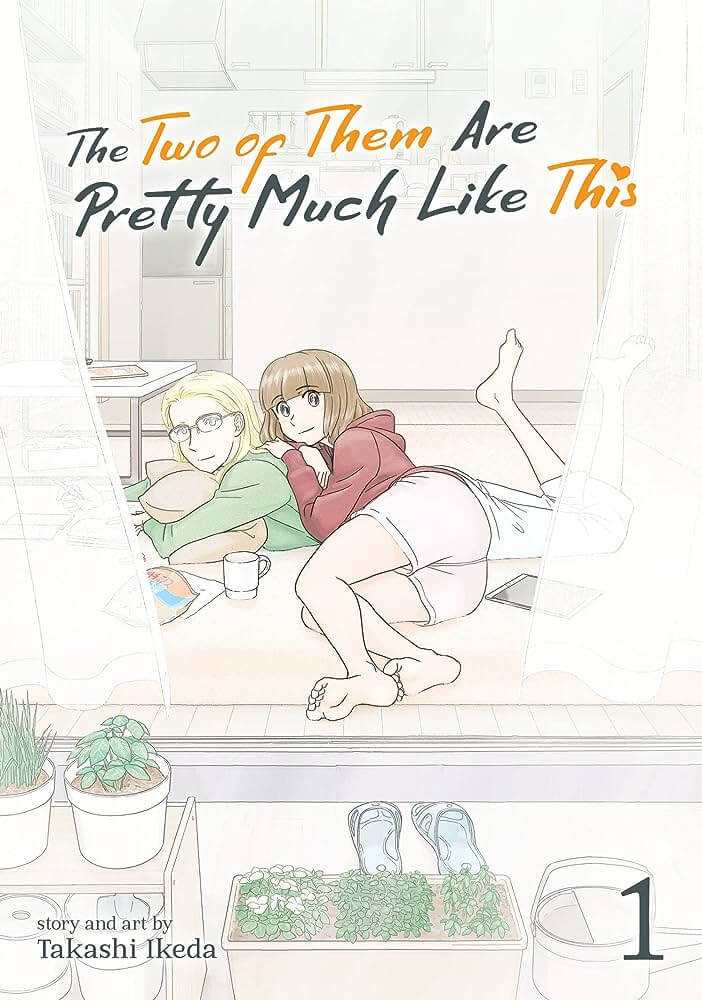
Translated by Ahn Kiet Ngo
Lettering by Rina Mapa
Cover Design by H. Qi
Proofreader: Krista Grandy
Copy Editor: Dawn Davis
Editor: Linda Lombardi
Publisher: Seven Seas Entertainment
Ellie is a screenwriter; Wako is a voice actor chasing her big break. Freshly moved in together, these girlfriends must figure out their own version of domestic bliss while navigating the rollercoaster of their respective careers in the anime industry.
This one is not a “romance” in the traditional sense in that the couple is already together before the story begins. Instead, this four-volume manga is a series of warm slice-of-life vignettes that builds a layered picture of Ellie and Wako’s life together. There are lots of sweet moments showing the two partners going about their ordinary days, as well as many jokes that will be painfully relatable to anyone who has worked as a freelancer in creative industries. The insight into their jobs is just as interesting as their deepening adult relationship.
Initially, the conflict of the series hinges on the fact that Ellie and Wako must keep their relationship a secret. They are officially “roommates” as far as their respective co-workers are concerned. This is tied to Wako’s ambitions as a voice actor—a role adjacent to an idol in many ways—and advice she receives to downplay her relationships and reassure fans that she does not have a boyfriend.
Meanwhile, two of her female co-stars are going the opposite route and fake dating to “yuri bait” their audience. In some respects, I wanted the series to dig into this social and industry pressure more, but the lighthearted tone of the manga means that Wako’s struggles become a background detail rather than anything the reader needs to take too seriously. While there is a little bit of drama, The Two of Them leans much more into comedy. So try this one out if you’re looking for the day-to-day shenanigans of an established couple.
You can purchase The Two Of Them Are Pretty Much Like This Volume 1 on Bookshop, Amazon, and Barnes & Noble.
Article edited by: Adam Wescott

Featured Sponsor - JAST
The sweetest romance and the darkest corruption, the biggest titles and the indie darlings; for visual novels and eroge, there's nowhere better.
Big thank you to our supporters
From their continous support, we are able to pay our team for their time and hard work on the site.
We have a Thank-You page dedicated to those who help us continue the work that we’ve been doing.
See our thank you page